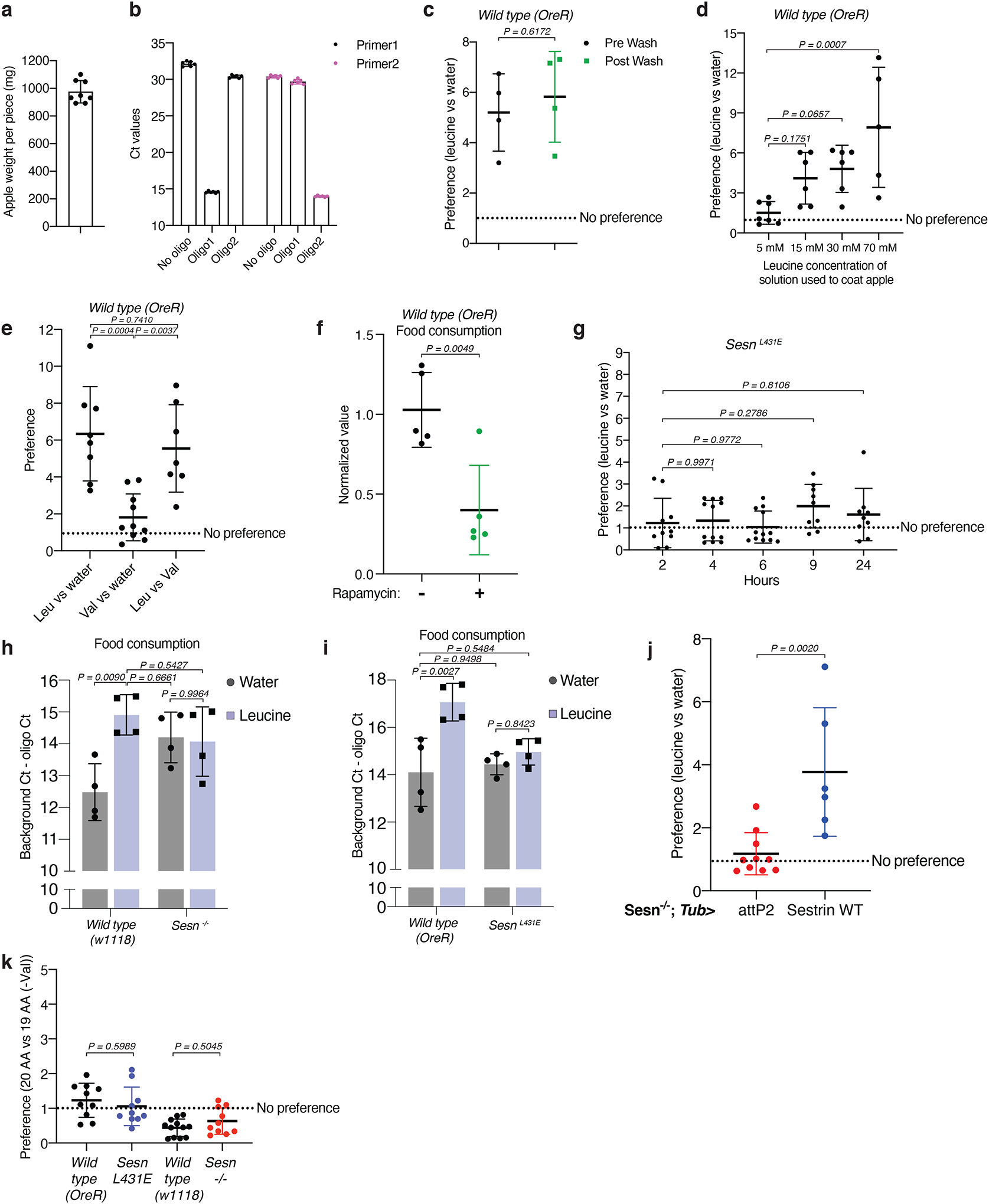Extended Data Fig. 4: Sestrin mediates the preference for leucine-containing food and influences total food intake.

a-c, Characterization of the methods used in the food two-choice assay. (a) Measurement of the weight of the apple pieces used in the assay. n=8. (b) Background qPCR signal determination for each oligonucleotide barcode used in assay. n=6 for each condition. (c) The qPCR signals used to determine the leucine preference of the wild-type flies come primarily from internal DNA oligonucleotides instead of external ones that might contaminate the outside of the body of female flies. qPCR for oligonucleotide barcodes in a leucine versus water choice assay before and after washing animals as previously described27. n=4 for both pre and post wash conditions.
d, Preference of the flies for apple pieces painted with the indicated leucine concentrations. Animals were given a choice between leucine- or water-coated apples. Indicated leucine concentrations (5 mM, 15 mM, 30 mM, and 70 mM) were the solution concentrations used to coat apples. The final concentration on the food should be ~10 times more diluted. n (5 mM) = 7, n (15 mM and 30 mM) = 6, n (70 mM) = 5.
e, Adult female flies do not have a preference for valine- versus water-painted apple pieces. Wild-type (OreR) animals were given indicated food choices and the preference fold-difference was shown. n (leucine vs water) = 8, n (valine vs water) = 10, n (leucine vs valine) = 7.
f, Rapamycin treatment reduces fly food consumption. Vehicle or Rapamycin pre-treated animals were given a choice between leucine- or water-coated apples. For the Rapamycin group during the choice assay, animals were fed on apples painted with Rapamycin in addition to either leucine or water. Data show the normalized values of food consumption. n=5 for both conditions.
g, SesnL431E animals do not have a preference for valine- over water-painted apple. Animals were given a choice between valine- or water-coated apples and food preference was measured at the indicated time points. Data show the fold-difference in relative food intake for the valine-coated apple compared to the water-coated apple. n=10 (2 hrs), 12 (4 hrs), 12 (6 hrs), 9 (9 hrs), and 9 (24 hrs).
h,i, SesnL431E animals have decreased food intake regardless of the leucine content of the food (h), and Sesn −/− animals have increased food intake regardless of the leucine content of the food (i). n=4 for all conditions.
j, Whole-body re-expression of wild-type Sestrin driven by Tub>Gal4 is sufficient to partially restore the preference for leucine-containing food of Sesn −/− adult female flies. Animals with indicated genotypes were given the choice between leucine- or water- coated apples. Data show the preference of fold-difference. n (attP2) = 10, n (Sestrin WT) = 6.
k, Adult female flies do not develop a preference for valine-containing apple regardless of their genotype. Animals with indicated genotypes were given the choice between leucine- or water- coated apples. Data show the preference of fold-difference. n (Wild type OreR, SesnL431E, Sesn−/−) = 10, n (Wild type w1118) = 12.
Values are mean ± SD of technical replicates from a representative experiment. Data are representative of three independent experiments with similar results. Statistical analysis was performed using two-tailed unpaired t test (c, f, j), one-way ANOVA followed by Dunnett’s multiple comparisons test (d, g), one-way ANOVA followed by Tukey’s multiple comparisons test (e), two-way ANOVA followed by Tukey’s multiple comparisons test (h, i), and one-way ANOVA followed by Šídák’s multiple comparisons test (k).
